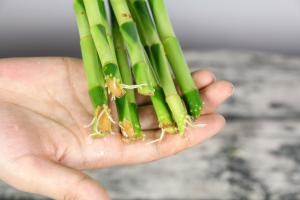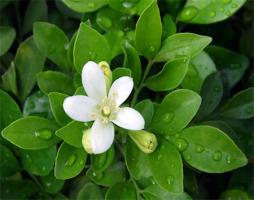Should Newly Planted Trees be Staked in Desert Monsoon?
The answer to the above question is a resounding “it depends.” A newly planted tree can benefit from staking, especially in regions with strong winds or heavy rain, such as the desert monsoon. However, staking is not always necessary and can even be detrimental if done improperly or for too long.
Reasons to Stake
Staking trees can offer several benefits. For one, it can provide extra support until the tree’s roots have developed enough to anchor it in place. This can prevent the tree from bending or even uprooting, which can damage young branches, bark, or even the root ball. Secondly, staking can also reduce the stress on the tree caused by wind, rains, or even heavy snow. Finally, staking can help establish the tree in place and prevent soil erosion around the root zone, which can expose the roots and dry them out faster, especially in arid regions.
Reasons Not to Stake
Staking trees can also have some disadvantages. For one, it can weaken the tree’s lower trunk and even create a risk of disease, pests, or fungus. This can happen if the tree is staked for too long or if the stake is too tight, causing bark damage or restricting air circulation. Secondly, staking can also create a false sense of security and prevent the tree from developing the necessary strength to resist wind and weather conditions on its own. Finally, staking can be unnecessary if the tree is planted properly on a firm and even bed and has enough soil and water to nourish its roots and growth.
How to Stake Properly
If you decide to stake a newly planted tree, there are some guidelines to follow to avoid damage and maximize benefits. First, use soft and flexible material, such as old stockings or tree ties, that will not harm the bark or scrape the trunk. Avoid using wire or metal, which can damage or cut the tree, or using too many ties, which can constrict the stem and create crevices for pests and disease. Second, stake the tree so that it can move slightly in the wind but not bend or break. This will allow the tree to develop stronger roots and a more robust trunk. Finally, remove the stakes after one or two seasons, or when the tree has developed enough strength and adaptability to survive on its own.
Conclusion
In conclusion, staking newly planted trees in desert monsoon can be a useful tool to protect them from wind, rain, and soil erosion. However, staking should not be seen as a universal solution or an alternative to proper planting, watering, and soil preparation. Staking can be helpful, but only if done properly and for a limited time. If you are unsure whether your tree needs staking, consult a local arborist or landscape professional for guidance and advice.

 how many times do yo...
how many times do yo... how many planted tre...
how many planted tre... how many pine trees ...
how many pine trees ... how many pecan trees...
how many pecan trees... how many plants comp...
how many plants comp... how many plants can ...
how many plants can ... how many plants and ...
how many plants and ... how many pepper plan...
how many pepper plan...






























